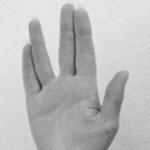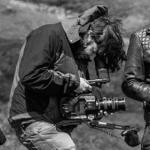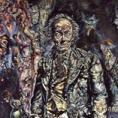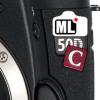Leaderboard
Popular Content
Showing content with the highest reputation on 02/15/2015 in all areas
-
Be careful in thinking it's 'just perfectly amazing' though. I mean... it can be. But there's some trickiness to it at the same time. Mathieu of Mirrorlessons did a good video on that:2 points
-
Samsung NX1 vs Canon C300
Marco M and one other reacted to Tim Naylor for a topic
A face with a color chart are essential in all comparative IQ tests.2 points -

Footage Comparison: Sony FS7, Canon C100, and Canon 5D Mark III (Magic Lantern Raw)
jcs reacted to QuickHitRecord for a topic
I had the opportunity to rent an FS7 for a shoot and in the down time, I tested it against my C100 and 5D Mark III (with ML raw loaded): There is additional info in the video description for those who are curious.1 point -
So, I'm spending a couple months in Berlin right now and thought I might put a shout out to anyone on this board who wants to have a meetup somewhere. Anyone up for a pint and some film talk?1 point
-
I think you're being a bit overly critical Vesku. It does show exposure value, just not when changing ISO. But its not exactly rocket science to work out what your EV value will be as you change it. No DSLR-like camera except for the d750 and d810 can change aperture steplessly. I've never seen problems with the AE/AF lock. What are you talking about? Its got plenty of button options and saving options. More than most other DSLR-like cameras. Why are you using AF for video? OIS is worse than other brands, but still much better than handholding. Lens stabilisation is kind of overrated anyway. Rigging the camera against your chest or shoulder generally gives a more weighty, cinematic feel. Noise at ISO 200? Who cares really. Real film has noise at that ISO too.1 point
-
A short sci-fi film I'm directing. Shot on BMCC + a lot of CG/vfx. Mixture of anamorphic (Kowa B&H on Voigtlander 28mm) and spherical (Samyang 16mm and 35mm). Filmed in London, China, and Hong Kong. Link: http://alexeymarfin.com/blue-eyed-me/ any feedback welcome :-)1 point
-
Speedbooster + EF lenses or MFT Voigtlanders for my GH4??
AaronChicago reacted to tylerh for a topic
The reason i was looking at EF is because EF metabolise speed booster gives you image stabilisation as long as the EF lens has it. I did see the ART lenses by Sigma and heard very good things about them. Is the Sigma art aimed at videographers ? Seriously considering the Sigma 18-35 f1.8 lens. It seems like it would blow the Panasonic 12-35 f2.8 away. Anyone tried this lens on a GH4?1 point -

Samsung NX1 vs Canon C300
SleepyWill reacted to Jimmy for a topic
Great, we will be in Reykjavik for a day before hitting the south coast. This is my 3rd visit now, I love the country like it is my home! We even spent a month there for our honeymoon, camping... (-2C in a tent was not very romantic, haha)1 point -
There seems to be a lot of options. I was hoping for a simple MFT Voigtlanders are better or EF glass is better.... never that easy is it lol :-) Those lenses are available in MFT format, but the 0.95 voigtlanders seem to have better reviews than the Samyang t1.5s. Then again they are more expensive.1 point
-

Samsung NX1 vs Canon C300
Jimmy reacted to Ivar Kristjan Ivarsson for a topic
If you are in Reykjavik send me a message. Happy to assist a fellow EOSHD forumist.1 point -
1 point
-

Moire Removal / Lessening
Axel reacted to Brian Luce for a topic
That's thing though, like a lot of people I used to think Moire was a purely electronic phenomena. But the naked eye CAN see some moire and it very much looks to be some video related artifact, but obviously it isn't otherwise why is the naked eye visualizing it? Once you realize that moire is part of real life, it makes it easier to accept something that shows up on your NLE the next day. I worry much less, generally, than most of you guys here about resolution and even DR, my biggest concern with a motion picture image is the presence of artifacts that look electronic and thus break the 4th wall. Moire perhaps shouldn't be the cringe inducing apparition that it's made out to be. so in other words, I'm suggesting a purely psychological remedy here.1 point -
Samsung NX1 vs Canon C300
Flynn reacted to Tim Naylor for a topic
I have no issues with the A7s layout. Mine is permanently in a Movcam cage (best accessory ever). I never shoot video with it unless it's on my rig (18" 15mm rods, Wooden Camera hand held grips and an F&V monitor mounted on the cross bar with a counterweight in the back). It balances perfectly for hand held as well as on sticks. I use it for work and play. Sure this rig might seem a bit much for many here. But as someone who shoots Arri's all week long, it's a welcome relief. On occasion when I'm fooling around I'll shoot it "naked" (cage / top handle only) and just use the camera's EVF / Monitor. The results are fine but not reliable enough for paid work (meaning my focus isn't as good with the camera's EVF/monitor). Andrew on the other hand probably has younger eyes than mine and seems to work this mode fine. If you're one of those rig less shooters let me suggest using a cage such as Tilta's. The wooden handle will definitely improve the ergonomics immeasurably. I only wish it was around before I bought my movcam.1 point -
Kodak celluloid film saved by studios - oh and by the way - what's the point?
mikegt reacted to markthetog for a topic
OK, I am a still photographer that has been in this game since the 60s. I was raised in the darkroom and the magical realm that film. chemistry and paper created. I was in love with the whole process as long as I was a hobbyist. When I became a commercial photographer and photo lab owner I longed for digital imaging. My brother ( a programmer and current head of engineering at a major photographic company) and I would dream of devices that would allow us to create repeatable images that could be printed electronically or transmitted to clients for them to use. It was a business issue for us. We wanted more time for making great images. Nor did we want to spend hours in the lab beating a negative into submission only to be asked to make 12 more prints exactly the same way. When I converted my labs to digital processes in 1995 I was delighted by the quality that exceeded conventional chemical processes even then. Cameras were not there yet but scanners, software and printers were. I was able to dramatically grow my business because of quality that was head and shoulders above the performance of analog processes. So much so that even lay persons could easily see the difference. Today, the digital process has so many advantages objectively over film production that I can scarcely justify the use of film except as an anachronistic exercise much like using wet plate process or gum bichromate. Film R&D stopped many years ago with only a couple of players in the market making any progress and that was to make their film stocks more compatible with scanners. Digital capture and the workflow solutions are being refined, advanced and pioneered by many companies and individuals around the world. The quality, already better will only extend its lead. Yes film has a certain quality, it is called obsolescence. You can make digital look like film if you want but why? We are not making Kabuki here with calcified rules and traditions. We are making new imagery with a medium that now allows us higher quality and more flexibility. Many of you weren't alive when we were using film but we were always looking for better tools and techniques and not looking to go back to nitrate film and orthochromatic stock. Sorry, but the rationalizations I hear for film are all subjective "feel" arguments that seem to mask a fear of learning new tools.1 point -
Moire Removal / Lessening
Nick Hughes reacted to Policar for a topic
1) Certainly good advice, but not always possible. I agree, though, that's the best approach. I've even seen the Alexa alias pretty severely in the right circumstances (fine-pattererned red fabrics at certain distances), and beta cam did terribly. Being smart when addressing set design is always a good choice. 2) Uhh... sure. 3) No. CCDs alias just as much as CMOS sensors... it's what's in front of the sensor and how it's processed that matters. 4) Worth a try, so is pushing the image just slightly out of focus if you really need to. If it's a brick wall in the distance, you won't lose that much resolution throwing it just a little out of focus to lessen aliasing. But kind of iffy. 5) The human eye does not see any more moire than you put in front of it. If you put an image of something that has moire in front of it, it will see it, same as with film, which also doesn't otherwise alias. I've had really, really good luck with some post techniques, assuming the aliasing isn't horrible. I sample the aliasing in Neat Video and use a 0-radius temporal filter and extremely strong low frequency noise reduction settings. Then I mask this in After Effects where needed, maybe add a little blur, then regain. For less severe (color only) aliasing you can copy the footage onto a layer above the original shot, add a 12-pixel radius blur (or thereabouts) and superimpose that blurred footage using the color transfer mode. I also mask this layer as it fuzzes out the richness of the color. These techniques are a pain, but very effective at at least reducing aliasing. That said, the fabric thing is your best bet. Although I'd had decent luck tackling fabric in post, only if it's pretty minor in the first place though. So shoot smart... choose appropriate fabrics for your camera (as I said above, Alexa aliases with some red fabrics, and the Canon C series even more so, despite both being pretty alias-free normally), throw your worst aliasing out of focus or avoid shooting brick walls in establishing shots (or shoot a still and blur it and composite it in later: seriously). Suddenly I don't miss my t2i as much.1 point -
Complete Set of "Character Lenses?"
richg101 reacted to SleepyWill for a topic
I want to buy some lenses, PM'd you1 point -

Samsung NX1 vs Canon C300
Ivar Kristjan Ivarsson reacted to Jimmy for a topic
I really need to get my hands on one. I need a lightweight camera for my trip to Iceland in March and, on paper, this ticks some serious boxed. As you can imagine though, Iceland can be unforgiving in terms of lighting (sun on ice against lava black rock, for example)... Which is why I am obsessing over the DR. I'll be taking the BMPCC too, so I guess DR is covered on some shots. As it stands, the decision is between the NX1, 1DC, A7s or possibly a BMPC(4K) Decisions, decisions.1 point -
Samsung NX1 vs Canon C300
Ivar Kristjan Ivarsson reacted to Tim Naylor for a topic
Well put. I come to this site because I learn things about small and inexpensive cameras that we don't regularly test or use on set. Last week I shot an AMEX commercial with an F55 but we also used a BMCPC as well for a different look. Much of the info on that cam came from sites like this. For the past month, I'm on a TV show where we use Amira's all day but guess what, we also break out the A7s and Go Pros from time to time. Again this site and several others help pros get a handle on emerging tech. I'm actually considering shooting my next feature on A7s (even though we have the choice of Arri's). While I do think we sometimes over analyze specs here and not just look at what great pics a camera makes, I find this site at the forefront of smaller, lighter and more versatile tech. Any pro who ignores these things will be left one day wondering why the phone stopped ringing.1 point -

Samsung NX1 vs Canon C300
jcs reacted to Christina Ava for a topic
last in to say, that the c300 colors blew my mind....1 point -
I found this video yesterday and it made me think of this thread. It's kind of related to this subject, especially on the matter of archival and how today's digital footage will hold up in time. And it actually is also wonderful and kinda magical. Watch it, you're in for a very cool (digital video about lost, and refound film...1 point
-

What do you think of Nikons new marketing strategy for DSLR Video
Ivar Kristjan Ivarsson reacted to Andrew Reid for a topic
I could have made that box. All I need is, erm... a box! Buy the Ninja and the lenses, suddenly I am Nikon! They must be so proud of themselves. By the way the lenses are their cheapest primes in the whole Nikon line-up and they haven't got focus gears, but hey... filmmakers don't need more than that right!?1 point -

Samsung NX1 vs Canon C300
jcs reacted to Oliver Daniel for a topic
Anybody with skill and talent can make any camera look awesome. A person without skill and talent will make an Alexa look like the worst camera ever. The skill and talent is knowing how to use your tools for the best creative results. All my stuff shot on RED is a bit crap because I've barely used it. My GH3 stuff is much better because I know the camera. My advice is that if you want to base your opinion of a camera on Vimeo content, don't. Rent it and shoot something with actual people, interesting locations and decent lighting. And lighting. And more lighting.1 point -

Samsung NX1 vs Canon C300
Tim Fraser reacted to jcs for a topic
It's perhaps more fair to say the FS700 at $8600 (with lens) was a compelling rival to the C300 ($15k no lens). The C300 wins in absolute detail (slightly), better skin tones out of camera, better usability, and a smaller package. The FS700 wins in slomo (up to 240fps 1080p-ish (up to 480 and 960fps at lower resolutions/cropping)), full frame support and superb low light with a Speedbooster. For fast turn-around, the C300's colors were (and still are) a major selling point. The FS700 can look great, but takes more work in post. If we add an Odyssey 7Q to the FS700 (bringing the price up to around $11K), this combo provides superior 10-bit ProRes, continuous 2K 240fps 12-bit raw, 120fps 4K (including raw bursts), 4K ProRes, and along with Slog2 puts it well past the C300 in terms of final image quality possible (including skin tones with post work). The new FS7 brings 4K 10-bit 422, up to 180fps 1080p internally, and along with improved color science, isn't just a rival for the C300, it far surpasses it. The FS7 is even doing well matched up with the ARRI Alexa/Amira! I'd hold off on the FS7 until Sony does at least one firmware update, however Sony is on the right track- giving us what we're asking for (as they have with the A7S). Samsung (NX1), Panasonic (GH4), and Sony are eager for our business- let's keep giving it to them. The most challenging aspect of a modern digital camera is skin tones: we notice right away when they aren't good. Resolution, moire, dynamic range, highlights/shadows- most people don't notice so much. When skin tones are off, everyone notices. When skin tones look great- everyone loves the image. That's why the 5D3, even with H.264 is still popular with a relatively soft image. I can understand there's a lot more work for camera tests shooting models/actors, however a camera test without skin tones, the most important test for the viewing public, doesn't really show how most people, both pros and consumers, will use the cameras (cats & dogs not included). To minimize the workload, setting the cameras to the best in-camera settings possible (or even selecting the best stock options- no tweaks), setting correct WB and exposure, and shooting in the same conditions makes a great camera test when comparing two or more cameras (no color work in post other than matching levels on the scopes, and converting all cameras to Rec709).1 point -

Kodak celluloid film saved by studios - oh and by the way - what's the point?
agolex reacted to William Malone for a topic
Good theory.. but essentially incorrect. While early photography did use a number of seriously dangerous chemicals, they were replaced in the early 1900s by much more benign chemistry. All of the materials you mentioned are listed as "low toxicity". Manufacturing computer gear is highly toxic... hence why you're not supposed to throw those old electronics in the trash. None of this is anywhere near as much of a environmental disaster as automobiles (and including electric cars BTW) and the biggest ED is humans (Chuckle) We should seriously hold on making them for awhile. 1 point -
Kodak celluloid film saved by studios - oh and by the way - what's the point?
agolex reacted to Tim Naylor for a topic
I started on film ages ago. The last time I shot it was three years ago (See: "Besides Still Waters" in last month's American Cinematographer). We had issues that I rather not revisit. For one, shooting on a remote location, our dailies were not daily. So dirty gate and static issues reared their ugly heads. Also, focus. Today's younger AC's are brought up more with focusing off monitor instead of tape. Problem is, with film camera monitors it's hard to judge critical focus. The more experienced AC's with a film background are older and hence much harder to afford for low budget indies. Should I ever shoot an indie again on film, I'll ask that the focus puller's scale be doubled. In short, I don't miss medium, but I do miss the efficiency. Andrew, you talk about how shooting on digital is faster and more spontaneous. Perhaps for the lone indie as yourself shooting off the cuff. Unfortunately, that's not the look everyone's looking to pay for in the theaters or watch on TV most the time. Professional shoots are still a multi headed beast. Perhaps the biggest complaint those of us who started in film and now shoot digital have is the endless rolling rehearsals, re-sets and innumerable takes plus the amount of playback that we never experienced with film. It's worse now with commercials as the video village has now become a small country of too many cooks. I defy anyone who works on features, commercials or episodic to say digital has made work days shorter or more efficient. And now that everyone thinks they need a DIT it's done nothing for labour costs. Then with the amount of footage that now has to be reviewed, transcribed, and noted, compared to film, I wonder if the difference between film / video production is that huge. The best part of digital has not been with the way I make a living (episodic / commercials) but mostly for my personal projects. For people who already know how to make a film, they know if they literally can grab and go and then make a film for next to nothing. There are a few directors who've taken the immediacy of digital and exploited it. Fincher comes to mind. Several of my colleagues work on House of Cards. It's mostly available light, they work very fast, and have no DIT. I wish everyone else would catch on. As far as IQ goes, for nights I much prefer digital. For days its a toss up. As a DP for work, the best part I like is being able to see a close to finished image on set. You actually take greater risks when you can see your mediums threshold right there on set instead of waiting for it to return from the lab. Regarding storage, anyone with anything worth storing will back up to new digital storage tech as the need comes. I still have scripts that were originated on floppy but living now on SSD. And when you die, it won't matter. You're dead.1 point -

Kodak celluloid film saved by studios - oh and by the way - what's the point?
agolex reacted to William Malone for a topic
Andrew, I just couldn't let this post go. I guess I would fall into the category of the "privileged few" having been a "film" director for over 35 years and having shot film almost exclusively. Let me start by saying while I do have a certain sense of nostalgia for film, I'm not someone who doesn't enjoy and in fact embrace new technology. I've been happily shooting "video" for the last 5 years with a ML equipped Canon 5D Mark 2. I have been waiting for the "perfect digital cinema camera" to come along before I upgrade. That has yet to happen. Because I'm an old guy, perhaps I may have a different prospective on this issue. The fall of film (in my demented perspective) is not that digital is better.. but because its cheaper. The seeds of the fall of film I think began in the early 80s. When I made my first film, I shot it in 16mm. At the time, a 400' roll of film (about 10 minutes running time) cost $34.00. Because of the Hunt Brothers trying to corner the Silver market, within a few weeks, the price of Silver went through the roof. Kodak raised the price to $76.00, which of course also included raising the price of print stocks. After a few more weeks, the price of Silver collapsed. Kodak never adjusted the price back down. Since then the prices of film and processing continued to rise until film and lab work fell out of reach of all but high end users. This left a huge hole in the market that video filled. In todays economy film cannot survive. Regarding Film versus Video; I made a film for Warner Bros in 2001. It was shot on an Arri 535 (Super 35mm) and was posted completely digitally. It was only the second film ever done that way at the time. The very first was the Cohen Brothers "Brother Where Art Thou?" The film completion bond company called it "Voodoo Technology". Now looking back on it all these years later, I still think this marriage (Film Capture/Digital Post) was the best it ever was. Let me be clear, you can get some terrific looking images with digital cameras but if you look at films made 10-15 years ago there are still looks you just can't get with an electronic sensor. There is a smoothness.. a silkiness that's just wonderful. For me digital has three big problems. Number 1 Rolling Shutter. LISTEN UP CAMERA COMPANIES!!! Don't even think about putting out another video camera with this problem... This is NOT a minor issue. (Yes I know some of the cameras are coming out with global shutters...and I know there are work arounds). You shouldn't have to rethink how you shoot something to accommodate the camera. Number 2 6 O'clock News Syndrome - I guess that I'm the only one who sees this as I've never heard anyone else mention it but it drives me crazy. During some action scenes you suddenly become aware you're watching "video" and it takes you out of the story. The movie suddenly looks like the 6 o'clock news and the illusion of film is suddenly gone. This seems to only happen during moving or action shots. I wish I could finger the culprit here but I just can't tell what's going on. Maybe someone can tell me. Number 3 And this one is HUGE. Archiving of Images. Many of the major film studios still do Black and White film separations of their movies including motion pictures shot on digital. Film has a shelf life of at least 100 years. This is now a proven fact. To date there is no safe and foolproof way to ensure what you shot will survive longer than a few years. I believe this era will be a period of the greatest loss of photographic images... It saddens me deeply... So will I go back to film? Probably not (except for shooting some art projects with my old 4x5 Grapflex). Do I miss it? Yes. There is something very tactile and wonderful about it. You open the side of the camera ... " I love the smell of Silver Halides and Acetate in the morning.... Smells like ... Victory". PS sorry for being so long winded. WM1 point -
Agent Provacateur, that Andrew Reid. "Symbiopsychotaxiplasm: Take One" is one of the most honest, beautiful films I've ever seen -that captures life and what happens on and off set so much better than any other movie I've ever seen. Shot in 1968 on the Eclair to film stock. I have never seen another movie so similar. It's not flim that's limits Chris Nolan, it's Chris Nolan. Memento was a wonderful film. A lot of Dogma '95 films were shot on film. As Shane's test shows - film has perfect motion - has a certain softness and sharpness that feels natural, not cold or clinical. It renders highlights better - shadows better - tungsten stock much better - richer colors. Film is still the best. Until a digital camera comes out that is superior, I still will love film. It's a struggle - it's a pain in the ass. But sometimes doing things the easier way is not the better way.1 point
-
How do you shave? Do you do it oldschool? With a brush and a bit of soap? An actual fancy bladed razor like back in the day or at a barber? Do you do multiple passes? Listen to a bit of jazz music in the background, taking your time? Dry up with a nice warm towel and finish with a splash of after shave with a slight alcohol burn? Does the routine comfort you? Does it clear your head? Does it keep you focussed? Did your years of shaving like that give you skills, making you hit that perfect clean shave everytime, without any skin irritation or cuts? It might take a bit longer, but there's something familiar, something comforting, something true and perhaps even romantic, about shaving like that. You could argue that it's quicker to take an electric shaver and go at it. Facing that blinking LED telling you the battery is out of juice... hairs clogging the apparatus, the aggravating noise. There's hardly any comfort in that, nor is it romantic. But it gets the job done, probably quicker and just as effective... What I mean is... maybe people just feel more comfortable shooting film, not even so much for the result, but because of the process. Because it feels right for them to do it that way and because of that they're able to give it their best. And who's to say which is better? I think it's a cool thing film is still around. Not that I would use it myself, but it's craftmanship... it's skill... and I'm just glad that there's people willing to keep that alive.1 point
-
I'm an old salt. I've worked in film most of my professional life, primarily in labs (gigantic and small) , post-production and editorial. The past fifteen years, I've been in film restoration. I have literally seen and handled hundreds of millions of feet of film in my life, dating from the early 1900's to, well, negs shot just a couple of years ago. In my work, we use traditional photochemical and digital technologies hand-in-hand. There are things digital can't possibly achieve, and things traditional photochemical processes choke on that digital wins as undisputed champ. And I LOVE my digital tech. I'm no luddite. In the end, though, I feel posts like this one (and on other blogs) re: the film issue are an exercise akin to arguing how many angels can dance on a saltine cracker. Or, to put it more directly, "You can't argue taste." It's a tool in the arsenal, just like why someone would shoot video with an 8-bit codec at 720P. Because they can/need to/like to. Right tool for the job. Everything else is academic. If YOU, the media creator, make the format choice that you believe is correct from an aesthetic, technical and budgetary standpoint, so be it. You are the artist. If it is to be 4K HFR 3D, great, if you want VHS, okay. If you want film, rock on. As to the dated, anachronistic aspects of the film medium, I agree it can be frustrating, unwieldy and time-consuming. I also happen to think performing live music with a band is a pain in the butt just for the sheer aggravation of moving a truckload of instruments, cabling, amps, etc. around, setting up, tearing down, but I would never advocate trashing it all for a keyboard and sampler just because it is cheaper, more convenient and "is just as good." Just one man's opinion...1 point
-
"Sweet Gourmandise" - A culinary film (shot with Canon 5D MarkII)
Gadhai reacted to florentigla for a topic
Hello everyone ! This is my new movie. It's entitled « eet Gourmandise ». This is a film about the preparation of cake, a "entremets", specially created for the film. You can see it there : It was shot with : Canon 5D MarkII with Canon 24-70mm f/2.8 L + 70-200mm f/2.8 L + 100mm Macro. It was editing with Avid and color graded with DaVinci Resolve. I wanted to show you and to have your feedbacks. So if you like it, do not hesitate to share the link of the video on social networks, with your community (Facebook, Twitter ...) Thank you. Have a nice day. ...and "Bon Appétit" !! Florent.1 point -

Kodak celluloid film saved by studios - oh and by the way - what's the point?
valid reacted to Andrew Reid for a topic
Nah it's no longer the case. Digital has superseded it for skin-tones and even dynamic range. What's the magic to having a film camera on set? It's just a tool. The magic happens in the image quality, the feel, the talent on the set.1 point -

Light stands
nikonstills reacted to M Carter for a topic
This grew out of a discussion over on DVX user, thought I'd add it here if anyone is interested. A poster asked "what is the best c-stand" and my reply was "usually, not a c-stand". C stands are designed to get small lights and flags into a maze of light stand feet. They're not intended for overheads or big 2K fresnels. They tip easily, they're hard to pack, and the way the column meets the base at a single point makes them even more prone to tipping. For some reason, "c-stand" has become a sort of knee-jerk must-have for people starting to build a kit. I like having c-stands, but especially on a tight budget, I'd shop for stands that are more versatile, can hold more weight with greater stability, are easier to pack, and could reasonably be used for, say, an 8x8 overhead in calm conditions, and (hopefully) cost the same or less. Something that can take an XL softbox or a big octagon without 3 sandbags and prayer. I'm comparing stands here to the Avenger Turtle-Base (unless you are 100% studio, you really don't want 1-piece C-stands - I feel they're a pain to pack). And turtles do give you the floor-stand option with a butt plug. Yet I'd take a Beefy Baby over a c-stand any day, in most cases. So - Stands in the $200 or less range you should consider. In the US, all the stands below can be found with free US shipping. There's probably a few more choices out there, but here's what's top of my radar: BEST VALUE: Matthews Steel Kit Stand 25 lb load, 37" footprint - 9.5 ft. tall (Actually better height, load and footprint than the Beefy Baby) $87, free shipping Not as heavy steel as Beefy Babies (and thus lighter to pack)... and, DUDE, eighty seven bucks!! That's two c-stands!! THE KING OF AFFORDABLE STANDS: Kupo Master Combo HD $156 88 freaking pounds max. load! 55" footprint! ELEVEN FEET high. baby pin AND junior receiver. Leveling leg! Cons: a very very wide footprint (very stable) that might be overkill on a tiny set. OR SAVE A FEW BUCKS: Kupo Master Combo Alu Senior Stand $144 26.5 lb load at a maximum height of 12' 4". Footprint: 46" - still pretty big. Aluminum construction, a triple function universal head and a leveling leg. THE KNEE JERK C-STAND, (most agree) THE BEST VERSION AVAILABLE: Avenger turtle base c-stand $169 9.8' feet height, 3' footprint, 22 lb max load, baby pin. Anyone who puts 22 lbs. on a fully extendedd c-stand may be asking for trouble though... If you shoot strictly in the studio, you can save some money and get 1-piece (non turtle) c-stands. Which are a pain to pack. If you use turtle base stands, you should invest in some butt plugs at $20 or so each. Makes a great floor-level stand. Or buy the narrower turtle base and a butt plug. BEST ALTERNATES TO THE C-STAND In addition to that $87 Steel Kit Stand... Matthews Beefy Beefy Double Riser $173 8.5' height, 22 lb max load 33" footprint. An industry standard. Essentially same price as the best c-stand. (Was manufactured with a 12' aluminum column for some time, and those show up cheap on the used market - I wouldn't extend those fully or use in the wind, as the column is weaker than steel. I have two of the aluminum stands and I feel the column could buckle with enough stress. Great lightweight stand to get smaller flags up very high though, great for big softboxes at reasonable heights.) Matthews Beefy Beefy Triple Riser $203 12 ft height, 20 lbs max load 33" footprint. A killer stand. WANT WHEELS ON A KILLER STAND? Kupo Junior Roller $199 17 lb max load - 45" footprint - 8.8' high With super useful and good-sized braking wheels - bigger wheels than the Matthews roller in fact, which don't have brakes (well, mine don't). (Avenger roller is same price, 1 foot shorter, only 28" footprint.) The giant footprint of the Kupo roller suggests it could be used for smaller overheads in calm conditions if big height isn't needed. This type of stand is a dynamite thing to have - I use them for microphone booms, they're sturdy and reposition fast, rarely need sand bags.1 point -
loved that film. Funny promo:1 point
-

Shooting inspiration and ideas
Fourtogaraffia reacted to Christina Ava for a topic
also inspiring... "Hands of Bresson" depicts the way robert bresson films peoples hands...pure poetry in motion.1 point



